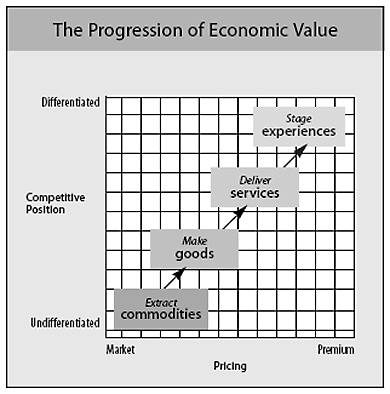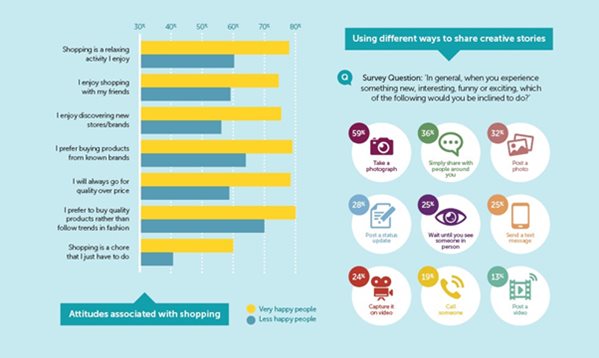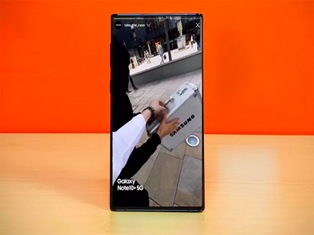
So much of marketing now centres on ‘experience’, how do we provide that for our customers, how do we encourage our buyers to invest in the story of our product and how do we encourage them to share that experience, and by extension our product, on their social channels?
One tool both sales and marketing teams will come back to time and time again is the customer journey, a great way to visualise and understand the motivations of a potential client. The customer journey acts like a story, telling how they behave while they visit your shop, venue, event or website, and crucially: why. By understanding the journey, you can begin to improve it, increasing the likelihood of repeat business, positive opinion and advocacy.
With recent events swirling around us and causing large events, public gathering and physical shops to shut down or postpone operations for the foreseeable future, how do we use these tools and new technologies to keep providing customers with great experiences when we can’t gather in groups?
Firstly, let’s take a closer look at the customer journey.
What is the customer journey?
“The customer journey in marketing refers to the customer’s path, via touchpoints, to their decision to purchase an item. A customer doesn’t usually decide to purchase an item immediately after finding out about it for the first time. Usually, customers look at a product or a brand several times before deciding on an action, known in marketing as touchpoints. The customer journey then proceeds through these touchpoints.”(source)
When you record the customer journey, you are endeavouring to map out different behavioural scenarios using data you already have, collected from your own business.
The resulting map is an easy to use marketing tool that anyone can create and can be invaluable to your organisation’s future strategy and planning.
This map provides two benefits:
- It allows decision-makers to focus on customers
- It helps make each step of the buying experience easier for potential leads
Organisations will typically seek to document their existing customers journey so that they can focus on two things:
- Improving the customers’ experience with the organisation, with the aim of increased customer loyalty
- Improving the organisation’s delivery of that experience, in order to streamline costs or operations.
Map out a customer journey & use this to better inform your marketing
Arguably the most important element of creating a compelling and therefore genuinely useful customer journey map, is to view the process from the customer’s perspective.
You will first need to collect two types of research to accomplish this:
Analytical Research: Using your website’s data, typically from Google analytics, will tell you exactly where the customers are active, how much time they spend on your site, plus when and where they leave.
Anecdotal Research: Social media is useful for gauging how customers feel or think, we call this brand sentiment. When someone is satisfied or upset about their experience with a company, they often feel compelled to use social channels as a mouthpiece. Proactive listening and asking customers to fill out surveys about their experience can also help you collect anecdotal research.
Use this data to then map out where each ‘touchpoint’ is for your particular client, or targeted client and adjust the site if necessary, looking for weaknesses in the path such as a lack of calls to action, poor on-page content or a badly functioning order or payment system.
This data will also show you hot spots of interest, or trends that are emerging. In both cases the findings can then fuel marketing strategies that directly respond to customer sentiment.
A notable shift has been the move from consumers blindly acquiring items to consciously choosing investment in memories, enrichment activities or experiences.
A recent Forbes article cited that 74% of Americans would prioritise experiences over products, and the stats don’t stop there.
Researchers and Economists have often grouped experiences in with services, but experiences are a distinctly different offering, as removed from services, as services are from goods.
Experiences have emerged as the next step in what we call the progression of economic value, then staging of experiences, is the next step to make these experiences virtual and therefore global in nature?

Ownership of experience and social media involvement
How do these consumers then go about documenting these experiences? Via social media is the loud and resounding response.
59% of those surveyed would opt to take a photograph of an experience, meaning platforms such as Instagram, Snapchat and TikTok are perfectly placed to cater to this visually motivated demographic seeking to share their memories.

But is that enough in today’s complex and ever-changing socio-economic climate? Shops, restaurants and leisure facilities are all shutting all over the globe, so where can people gather to engage in experiential marketing events?
The next frontier must be virtual. The movement has already started at a grass roots level with individuals setting up ‘pubs’ to engage with friends all over the world in lockdown situations. Whether part of a brand activation team or an experiential marketing agency, event professionals have been moving towards more VR, AR and social platform based immersive experience campaigns in recent years. But now it’s imperative to stay relevant as people stay in.
Virtual experiential marketing
One particularly good example of moving the real world into the virtual realm is the Ikea Place campaign. The VR app allows users to place virtual Ikea furniture into their own homes to see how furniture would look once assembled. The new Ikea Place app claims to be 98% accurate in scale, rendering 3D images to react to light and shade, giving consumers a much more realistic portrayal.

Samsung instructed a marketing agency to create a series of interactive interconnected Instagram Stories that took you, the consumer, on a Black Mirror Bandersnatch-style adventure. Your mission is to safely carry the new Samsung Galaxy Note 10+ 5G to its destination. What follows, consists of a series of decisions you will have to make to pick the right path, it took 20 individual Instagram accounts and 50 Stories to make this immersive adventure for Samsung.

In recent days we have seen a rise in free virtual tours of some of the world’s largest art galleries, museums, zoos and national parks.
The world is a strange landscape for us right now as social beings and these institutions offering free entertainment and education will not be forgotten when the dust settles, and we return to the streets. These investments in brand reputation will pay dividends.
Now is the time for brands, businesses and organisations to look at what they can achieve, provide and do, to create an online, virtual version of themselves.




